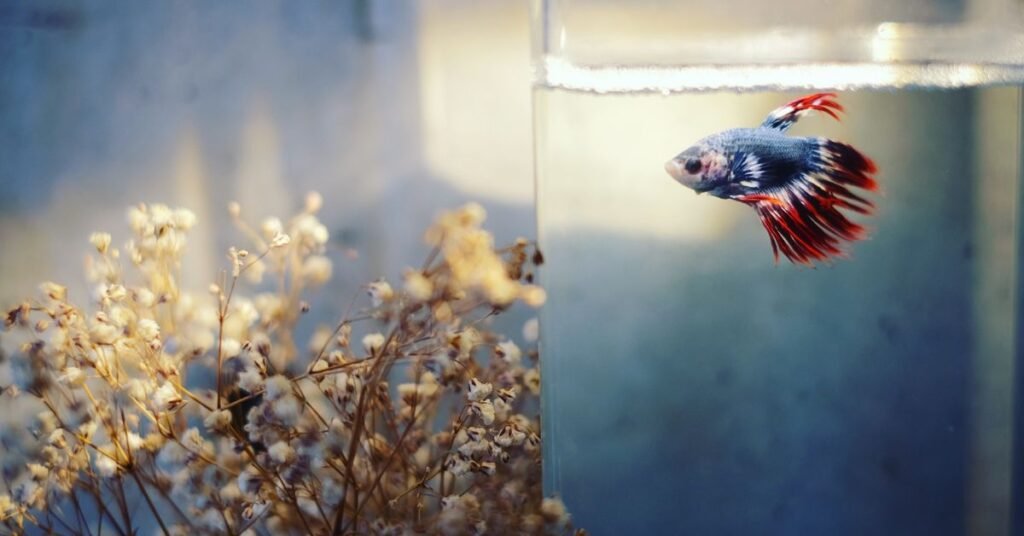Setting up an aquarium is an exciting adventure! You’ve carefully chosen the perfect tank, gravel, and decorations. Now, you’re eager to add your new finned friends. But, it’s important to wait before introducing your fish to their new home. An aquarium needs time to get ready for fish. This process is called cycling. Cycling helps remove harmful waste products from the water. Beneficial bacteria grow and make the water safe for fish. If you add fish too soon, they might get sick or even die. By waiting, you’ll create a healthy and happy home for your fish.
Importance of Cycling Your Aquarium Before Adding Fish
Cycling your aquarium before adding fish is crucial for creating a safe and healthy environment. The nitrogen cycle establishes beneficial bacterial colonies.
Fundamental in breaking down toxic waste products like ammonia and nitrite into less harmful nitrates.
Without cycling, fish are exposed to elevated levels of these toxins, leading to stress, illness, and even death.
A properly cycled tank stabilizes water parameters, making it easier to maintain a consistent and suitable habitat for your aquatic pets.

How to Set Up and Maintain a Healthy Aquarium
Step 1: Set Up Your Aquarium
Before adding any fish, make sure your aquarium is properly set up. This includes:
- Setting up the tank and stand
- Installing the filter, heater, and other equipment
- Adding substrate (gravel or sand) and decorations
- Filling the tank with water
Make sure all equipment is functioning correctly before moving on to the next step.
Step 2: Cycle the Aquarium
Cycling the aquarium is essential to establish beneficial bacteria that help break down harmful waste products. This process is called the nitrogen cycle and it normally takes about four to six weeks. Here’s how to cycle your tank:
- Add an ammonia source: You can use fish food, pure ammonia, or a commercial product designed to start the cycle.
- Test water parameters: Use a test kit to monitor ammonia, nitrite, and nitrate levels. Initially, you’ll see a spike in ammonia, followed by a rise in nitrites, and finally an increase in nitrates.
- Wait for the cycle to complete: The cycle is complete when both ammonia and nitrite levels drop to zero, and you have a consistent reading of nitrates.
Step 3: Test Water Quality
Before adding fish, ensure that water parameters are within safe ranges:
- Ammonia: 0 ppm
- Nitrite: 0 ppm
- Nitrate: Below 20 ppm
- pH: Check the ideal range for your specific fish species
Regularly testing your water ensures a stable and healthy environment for your fish.
Step 4: Acclimate Your Fish
When your water parameters are stable, it’s time to introduce fish. However, it’s important to acclimate them to their new environment to reduce stress:
- Float the Bag: Place the sealed bag containing your fish into the aquarium for 15-20 minutes to allow the water temperature to equalize.
- Add Aquarium Water: Gradually add small amounts of aquarium water to the bag every 5 minutes for about 30 minutes. This helps your fish adjust to the new water chemistry.
- Release the Fish: Gently net the fish from the bag and release them into the aquarium. Avoid adding a bag of water to your tank.

How Long to Wait Before Adding Fish to a New Tank
The amount of time you need to wait before adding fish to a new tank largely depends on the completion of the nitrogen cycle.
This cycle typically takes around 4-6 weeks to establish beneficial bacteria colonies that convert harmful ammonia and nitrites into less harmful nitrates.
It’s critical to be patient during this period to ensure a stable and healthy environment for your fish.
Rushing the process can lead to an unstable environment, resulting in stressed or unhealthy fish.
Monitoring the water parameters regularly with a test kit will help you track the progress of the cycle.
Once ammonia and nitrite levels are both at zero and nitrates are consistently below 20 ppm, you can confidently begin introducing your fish.
How Fish Can Survive in a New Tank
To help fish survive in a new tank, it’s important to prepare the tank properly and take steps to reduce stress for the fish.
Before adding fish, the tank should have clean water and all equipment working, like the filter, heater, and lights.
The tank needs time to build up good bacteria that keep the water safe, a process that takes about 4-6 weeks.
Control the ammonia and nitrite levels to ensure they are safe for your fish. Use a test kit to check the water, making sure ammonia and nitrite levels are at zero, and nitrates are low.
Check the pH level too because different fish prefer different pH levels. When your tank is ready, don’t just drop the fish in.
Instead, float the closed bag with the fish in the tank water for 15-20 minutes. Then, slowly add small amounts of your tank water to the bag every 5 minutes.
Finally, use a net to gently move the fish into their new home. It’s important to take these steps slowly and carefully.

How Quickly Does Ammonia Build Up in an Aquarium?
Ammonia buildup in an aquarium can occur quite rapidly, especially in newly set up tanks or environments with inadequate filtration.
When fish produce waste, leftover food decomposes, and organic matter breaks down, ammonia levels can begin to rise within a matter of days.
Typically, in a new tank that hasn’t been cycled properly, detectable concentrations of ammonia can appear within the first week.
Without beneficial bacteria to convert ammonia to less harmful substances through the nitrogen cycle, the concentration can quickly reach toxic levels.
Regularly monitoring water parameters is crucial, especially in the first few weeks, to ensure ammonia levels remain under control.
Conclusion
Setting up an aquarium and adding fish is a fun and rewarding experience, but it’s important to be patient. You should wait about 4-6 weeks after Setting up an aquarium in your tank to add fish. This waiting time allows helpful bacteria to grow, which keeps the water safe and healthy for your fish. Always check the water quality to make sure ammonia and nitrite levels are at zero and nitrates are low. Follow the steps carefully, and remember to introduce your fish slowly to their new home to reduce stress. By taking your time and doing things right, you will have a happy and healthy aquarium.
FAQ’s
1. How often should I clean my aquarium?
It’s advisable to perform partial water changes and clean the tank once a week. This includes siphoning out debris from the substrate, wiping down the glass to remove algae, and checking the filters. Regular maintenance helps maintain water quality and keeps your fish healthy.
2. Can I add all my fish at once?
It’s best to add fish gradually, even after the nitrogen cycle is established. Adding a few fish at a time allows the beneficial bacteria in your tank to adjust and grow in response to the increased waste. Rapidly increasing the bioload can lead to ammonia spikes and stress for the fish.
3. Do I need to use a water conditioner?
Yes, using a water conditioner is essential when adding tap water to your aquarium. Conditioners neutralize harmful substances like chlorine and chloramines, which can be toxic to fish. Always treat tap water before adding it to your tank.
4. Why are my fish hiding?
Fish may hide due to stress, which can be caused by various factors such as poor water quality, aggressive tank mates, or sudden changes in their environment. Ensure that the water parameters are within the ideal range for your species, provide adequate hiding spots, and monitor tank interactions to reduce stress.
Also Must Read More: What Color Light is Best for Aquarium Plants?